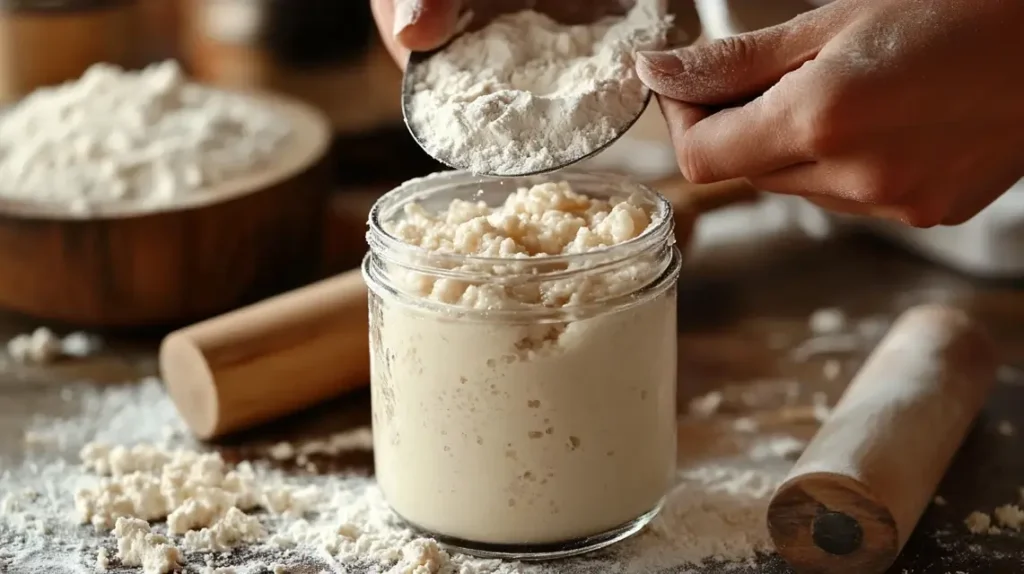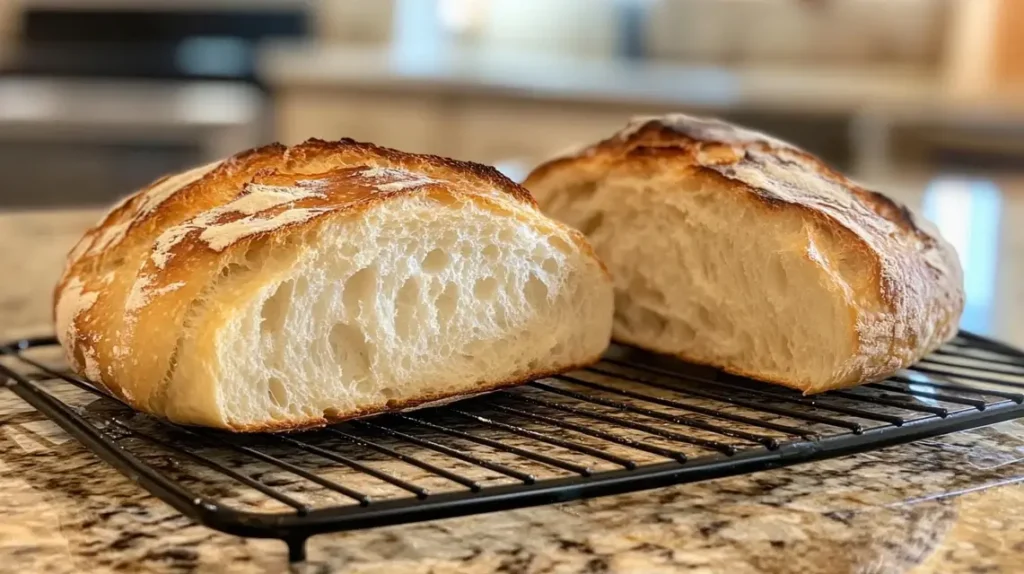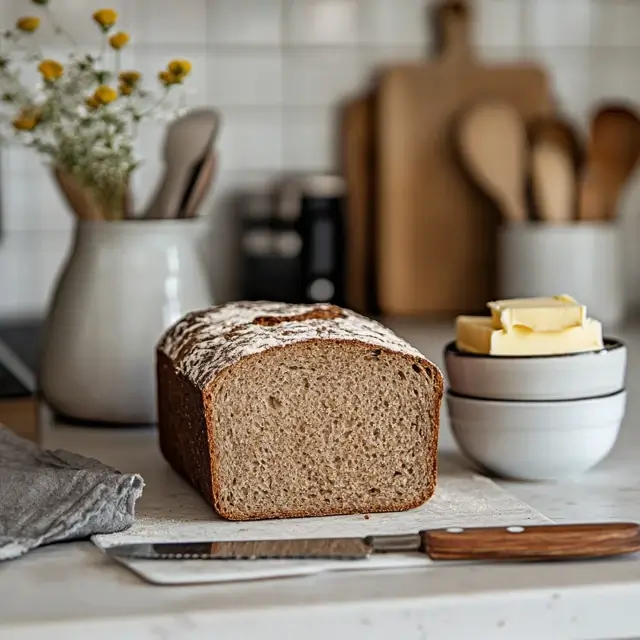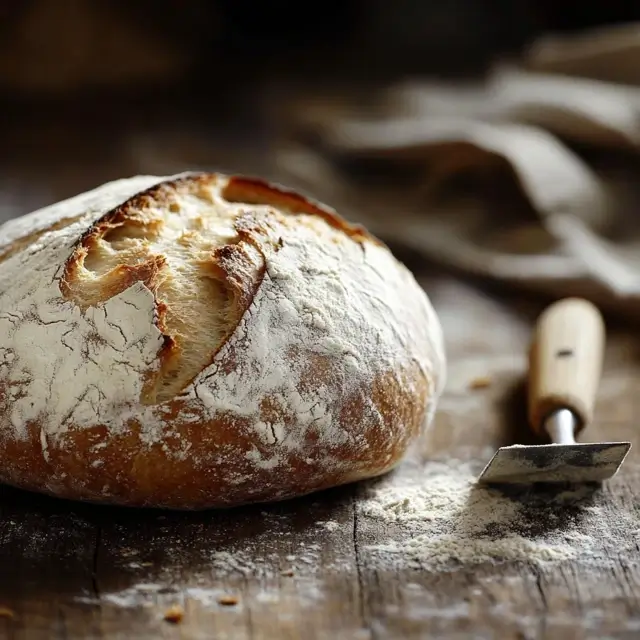Table of Contents
Bread has been a staple in human diets for centuries, but not all bread is created equal. From the rustic tang of this type of bread to the quick, sweet simplicity of banana bread, the world of baking is as diverse as it is delicious. Yet, a common question arises: is this type of bread considered a quick bread? At first glance, they may seem similar—both can be made at home and feature basic ingredients like flour and water—but their methods, textures, and flavors tell completely different stories. In this article, we’ll unravel the differences between this type of bread and quick breads, explore their unique characteristics, and discover where each fits into the baking spectrum. Whether you’re a seasoned baker or a curious beginner, this guide will give you the knowledge you need to better understand these two beloved bread types.
Is this type of bread considered a quick bread? The short answer is no, but why? While this type of bread and quick bread are both popular homemade options, they differ significantly in their leavening method, ingredients, and the time they take to bake. This type of bread relies on natural fermentation, taking hours or even days to develop its complex flavor and airy texture. In contrast, quick breads use chemical leavening agents like baking soda or baking powder to rise instantly, making them perfect for busy bakers.
In this guide, we’ll explore the key differences between this type of bread and quick bread, their unique characteristics, and how each fits into the world of baking.
Is this type of bread considered a quick bread?
In this guide, we will explore the key differences between this type of bread and quick bread, their unique characteristics, and whether a “quick bread” option exists.
Understanding this type of bread: What Makes It Unique?
This type of bread has a mystique that bread lovers adore. But what truly sets it apart? It all comes down to its natural fermentation process and the complex flavors it produces. Unlike bread made with commercial yeast, this type of bread uses a starter—a mixture of flour and water populated with wild yeast and bacteria. This starter acts as the leavening agent, making this type of bread a product of nature and time.
The Basics of Sourdough: Ingredients and Process
To truly grasp why sourdough isn’t typically considered a quick bread, let’s break down its process. At its core, sourdough requires just three ingredients:
- Flour
- Water
- Salt
However, the magic happens during fermentation. The starter, which takes days or even weeks to develop, ferments the dough slowly, resulting in its distinctive tangy flavor and chewy texture. The preparation can be broken into several stages:
- Feeding the Starter: A cycle of adding fresh flour and water to keep the starter active.
- Mixing the Dough: Combining starter, flour, water, and salt to form the dough.
- Bulk Fermentation: Allowing the dough to rise over several hours.
- Shaping and Proofing: Forming the dough and letting it proof, often overnight.
It’s clear that sourdough is a labor of love. But does this fit the criteria for a quick bread? Not quite.
Unlike bread made with commercial yeast, this type of bread uses a starter—a mix of flour and water populated with wild yeast and bacteria.
What Defines Quick Bread?
Quick breads are, as the name implies, quick to make. They skip the lengthy fermentation process and rely on chemical leavening agents like baking soda or baking powder. This makes them ideal for busy bakers looking for a fast fix.
Unlike bread made with commercial yeast, sourdough uses a starter—a mix of flour and water populated with wild yeast and bacteria.
Key Characteristics of Quick Breads
Here’s what makes a bread “quick”:
- Leavening Agents: Instead of yeast, quick breads use baking soda or baking powder.
- No Fermentation: No need for proofing or extended rising times.
- Mix-and-Bake Simplicity: Combine ingredients, pour the batter, and bake!
Popular examples include banana bread, cornbread, and muffins. These breads are sweet, soft, and ready in a fraction of the time sourdough requires.
Why Sourdough Isn’t Typically Categorized as a Quick Bread?
Sourdough simply doesn’t tick the boxes for quick bread. Its lengthy preparation and reliance on natural fermentation are its defining traits. Quick breads prioritize speed, while sourdough celebrates patience and tradition.
“Sourdough is the marathon runner of the bread world, while quick bread is more of a sprinter.”
Quick breads are sweet, soft, and ready in a fraction of the time sourdough requires.
The Science Behind Sourdough Fermentation

The heart of this type of bread lies in its fermentation process. This is where science and art intersect, creating the rich, complex flavors and textures that make this type of bread a favorite among bread enthusiasts. Unlike quick breads, the fermentation of this type of bread involves a delicate dance between wild yeast and lactic acid bacteria.
The Role of Wild Yeast and Lactic Acid Bacteria
Wild yeast is the unsung hero of sourdough, naturally present in the environment and captured in the starter. It serves as a natural leavening agent, producing carbon dioxide to give the bread its rise. Meanwhile, lactic acid bacteria contribute to the signature tangy flavor by breaking down sugars and producing lactic and acetic acids. This combination makes sourdough:
- Flavorful: The acids create a depth of taste unmatched by quick breads.
- Texturally Unique: The gluten structure formed during fermentation results in a chewy, airy crumb.
- Preservative-Free: The acidic environment naturally extends shelf life, reducing the need for artificial preservatives.
Time and Patience: Essential Elements of Sourdough
Sourdough is not for the impatient baker. From feeding the starter to the final proof, the process can span 24 hours or more. In contrast, quick breads are ready in under an hour, start to finish. But sourdough lovers argue that the time invested is worth it. Why? Because the flavor and texture are leagues ahead of what quick breads can offer.
“Good things take time, and sourdough is living proof—literally!”
This combination of wild yeast and bacteria not only makes sourdough rise but also enhances its taste and digestibility.
Comparing Sourdough and Quick Breads: Key differences

To fully understand why sourdough isn’t a quick bread, it’s helpful to compare the two side by side.
Leavening Agents: Natural vs. Chemical
- Sourdough: Relies on wild yeast and bacteria for natural leavening.
- Quick Bread: Uses baking soda or baking powder for instant rise.
Preparation Time: A Tale of Two Methods
- Sourdough: Requires hours (or days) for fermentation and proofing.
- Quick Bread: Ready to bake within minutes of mixing.
Flavor Profiles and Textures
- Sourdough: Offers complex, tangy flavors with a chewy texture.
- Quick Bread: Typically sweeter and softer, with a cake-like consistency.
Here’s a simple table summarizing the differences:
| Feature | Sourdough | Quick Bread |
|---|---|---|
| Leavening Agent | Wild yeast and bacteria | Baking soda/powder |
| Prep Time | 24+ hours | Less than 1 hour |
| Flavor | Tangy and complex | Sweet and mild |
| Texture | Chewy and airy | Soft and dense |
Are There Any Quick Sourdough Recipes?
There are ways to create “quick bread” recipes for those who want to speed up the process. Discover these quick bread recipes for a faster alternative.
While traditional breadmaking is a slow process, there are methods to create “quick bread” recipes for those in a hurry. These recipes typically involve shortcuts, such as using commercial yeast alongside a starter or skipping the prolonged fermentation step. However, purists might argue that these aren’t truly authentic breads.
How to Make a “Quick Sourdough” Loaf?
Here’s a simplified method for a faster sourdough:
- Ingredients: Combine a small amount of sourdough starter, commercial yeast, flour, water, and salt.
- Mixing and Rising: Allow a shorter rise time (around 2–3 hours).
- Baking: Bake as usual, and you’ll get a loaf with a hint of sourdough flavor without the long wait.
Balancing Speed and Flavor in Sourdough Baking
Quick sourdough recipes compromise some of the depth of flavor that traditional methods achieve. But for a beginner or someone short on time, these recipes can be a great introduction to the world of sourdough.
Benefits of Sourdough Over Quick Bread
While quick bread is convenient, sourdough offers distinct advantages that go beyond flavor. From nutritional value to digestive benefits, sourdough’s slow fermentation process unlocks qualities that make it stand out.
Nutritional Advantages of Sourdough
Sourdough bread is often hailed as a healthier option compared to its quick bread counterparts. Here’s why:
- Better Nutrient Absorption
The fermentation process in sourdough breaks down phytic acid, a compound in grains that can hinder nutrient absorption. This makes minerals like magnesium, zinc, and iron more bioavailable. - Lower Glycemic Index
Sourdough digests more slowly, leading to a gradual release of sugar into the bloodstream. This helps regulate blood sugar levels and prevents sudden spikes. - Rich in Probiotics (When Fresh)
While most probiotics don’t survive the baking process, some live cultures in lightly baked sourdough can aid gut health.
Digestive Benefits: Why Sourdough May Be Gentler
Sourdough is often considered easier to digest than quick bread, thanks to its extended fermentation process. Here’s how:
Gluten Breakdown
The fermentation process pre-digests some of the gluten, making sourdough more tolerable for individuals with mild sensitivities.
- Gut-Friendly Bacteria
The presence of lactic acid bacteria fosters a healthy gut microbiome. - Reduced Bloating
The natural leavening process minimizes gas-forming compounds often found in other breads. - Common Misconceptions About Sourdough and Quick Bread
There’s no shortage of myths about sourdough and quick breads. Let’s clear up a few misunderstandings.
Myths About Sourdough’s Time Commitment
Some believe making sourdough requires constant attention, but it’s more about planning than labor. The long fermentation periods often happen overnight or while you’re doing other tasks.
Clarifying the “Quick Bread” Misnomer
People sometimes confuse sourdough with quick bread because it can occasionally be made faster using shortcuts. However, traditional sourdough and quick bread remain fundamentally different in preparation, flavor, and texture.
“Think of sourdough as a symphony—complex and layered. Quick bread is more like a catchy pop song: short and sweet.”
Quick Breads: Popular Varieties and Uses

Quick breads have their place in the kitchen, offering convenience and versatility. They’re perfect for busy bakers and casual snackers alike.
Exploring Classic Quick Bread Recipes
Some popular types of quick bread include:
- Banana Bread: A sweet treat that’s perfect for using up overripe bananas.
- Cornbread: A savory side dish often served with chili or barbecue.
- Zucchini Bread: A creative way to sneak veggies into your diet.
- Quick Bread for Busy Bakers
- Quick breads are ideal when you’re short on time. With simple ingredients and minimal equipment, you can whip up a delicious loaf in under an hour.
How to Incorporate Sourdough and Quick Breads Into Your Diet?
Both sourdough and quick breads have their strengths, and incorporating them into your meals can be both fun and nutritious.
Meal Ideas Featuring Sourdough
- Breakfast: Toasted sourdough with avocado and poached eggs.
- Lunch: Sourdough sandwiches filled with fresh veggies and lean protein.
- Dinner: Pair sourdough with soups, stews, or charcuterie boards.
Quick Bread as a Snack or Breakfast Option
Quick bread shines as a grab-and-go snack or an easy breakfast. Pair banana or zucchini bread with coffee for a cozy morning treat.
The Role of Hydration in Sourdough vs. Quick Bread
Another key factor that sets sourdough apart from quick bread is hydration levels. Sourdough recipes often have a higher hydration percentage, meaning they contain more water relative to flour. This high hydration contributes to the open crumb structure and chewy texture of sourdough. On the other hand, quick breads typically have a lower hydration level, resulting in a denser, cake-like consistency. Additionally, the hydration in sourdough plays a crucial role in gluten development, which is essential for its structure, whereas quick breads do not rely on gluten formation since they rise chemically rather than through fermentation.
Flavor Complexity: Why this type of bread Tastes Different from Quick Bread
One of the biggest reasons people love sourdough is its depth of flavor, which develops over time through natural fermentation. The wild yeast and lactic acid bacteria in a sourdough starter create a unique balance of tangy, nutty, and slightly sweet flavors. This complexity cannot be replicated in quick breads, which rely on instant chemical leavening. Because quick breads do not undergo fermentation, their flavors are more straightforward and dependent on added ingredients like sugar, fruits, nuts, or spices. Additionally, the fermentation in sourdough produces organic acids that not only enhance taste but also contribute to a longer shelf life—meaning sourdough stays fresher longer without preservatives, unlike many quick breads that can dry out quickly.
Conclusion: Where This Type of Bread and Quick Bread Stand
Both this type of bread and quick bread have their own unique appeal. While this type of bread requires time and patience, its nutritional benefits and complex flavors make it worth the effort. On the other hand, quick bread is perfect for those seeking a fast and reliable baking option.
Appreciating Their Unique Strengths
Each bread type offers something special. This type of bread is a nod to tradition, while quick bread caters to modern convenience.
“Bread baking isn’t about choosing sides—it’s about savoring every slice.”
Finding the Right Fit for Your Lifestyle
Whether you’re a this type of bread enthusiast or a quick bread aficionado, there’s room for both in your kitchen. Why not try making both and see which you love most?
The Importance of Understanding Bread Categorization
Understanding the distinction between sourdough and quick bread goes beyond just baking—it’s about appreciating the science, tradition, and versatility of breadmaking. Sourdough, with its slow fermentation process, is a testament to patience and precision, offering health benefits such as improved digestibility and a lower glycemic index. Quick breads, on the other hand, embrace convenience, catering to busy lifestyles with their fast preparation and customizable flavors. By exploring both, bakers can choose what aligns best with their goals—whether it’s creating a rustic loaf steeped in tradition or whipping up a flavorful quick bread for last-minute guests. Ultimately, both bread types showcase the incredible diversity of baking, blending the art and science of transforming simple ingredients into something truly special.
Banana Bread Recipe: 5 Game-Changing Secrets for the Best Flavor! – Since banana bread is a classic example of quick bread, this article can provide readers with additional insights on baking quick breads.

